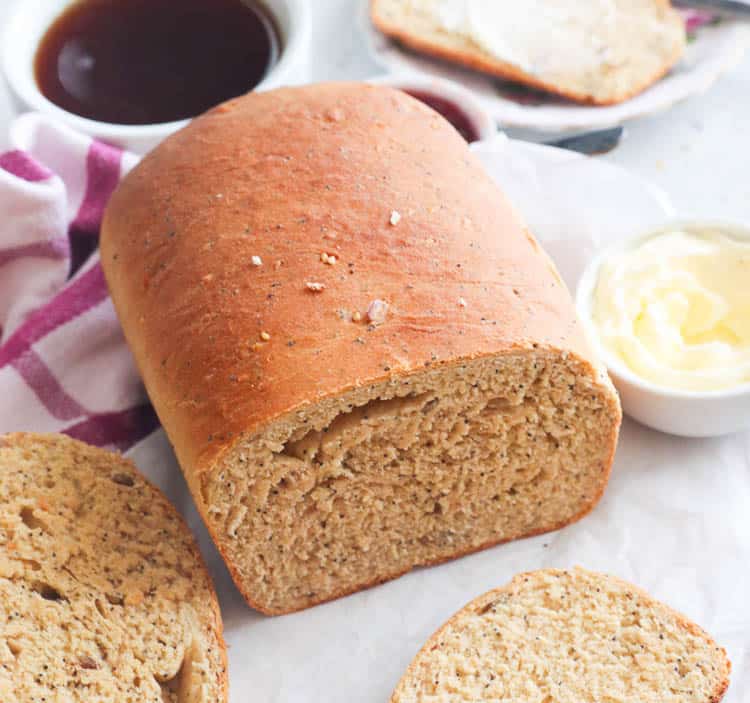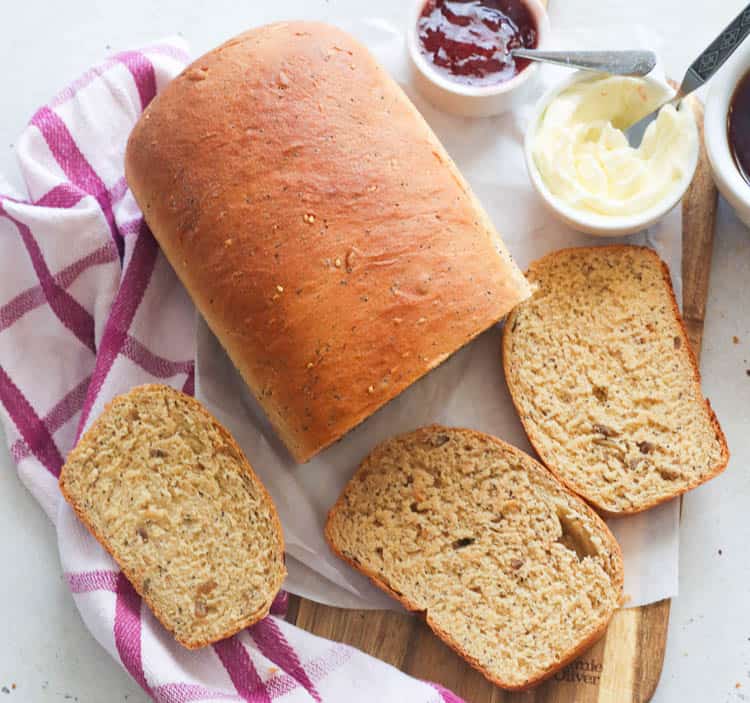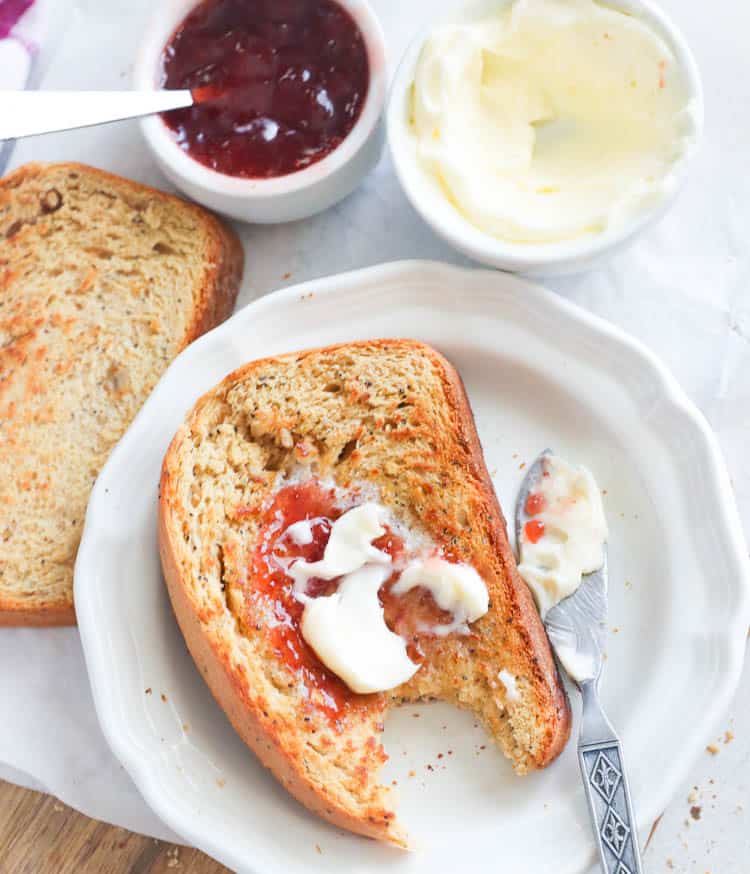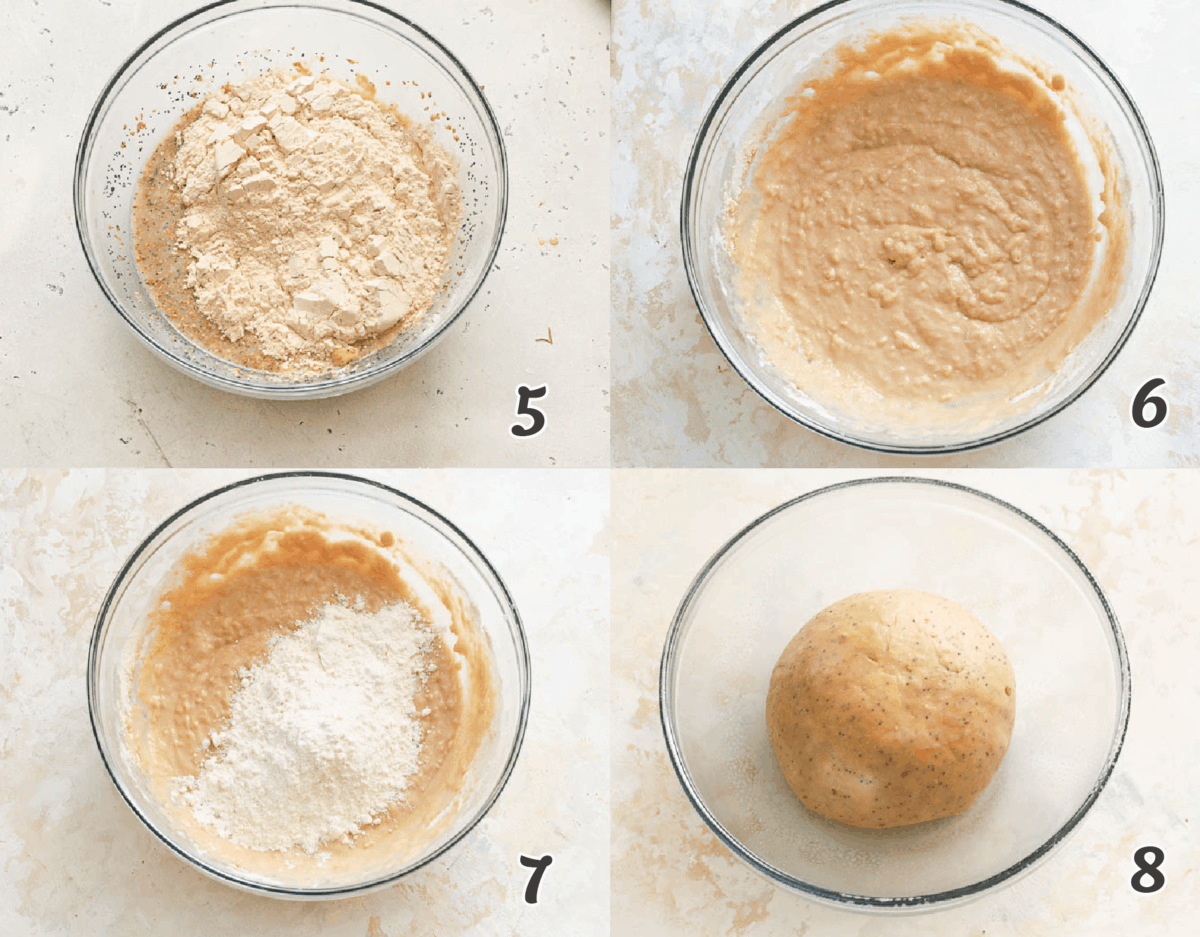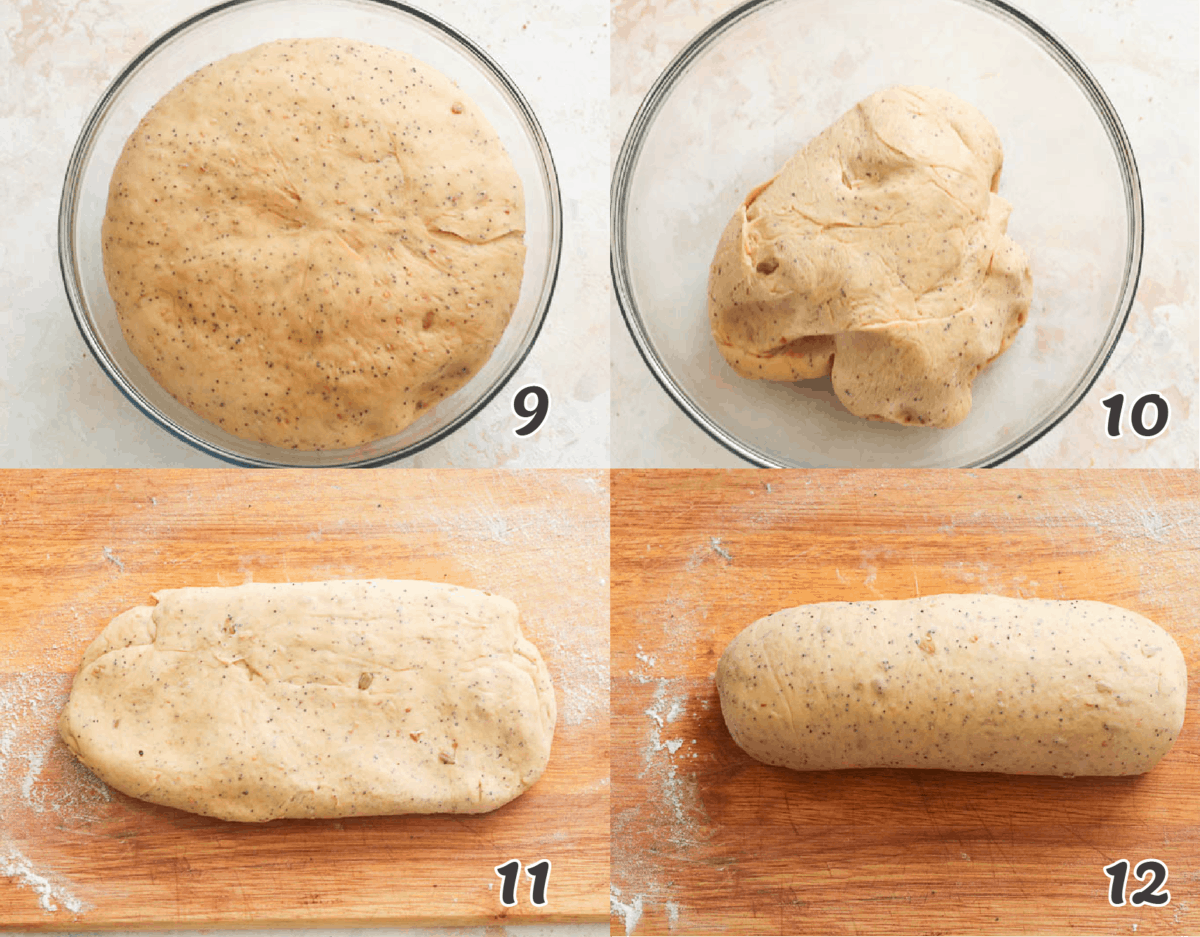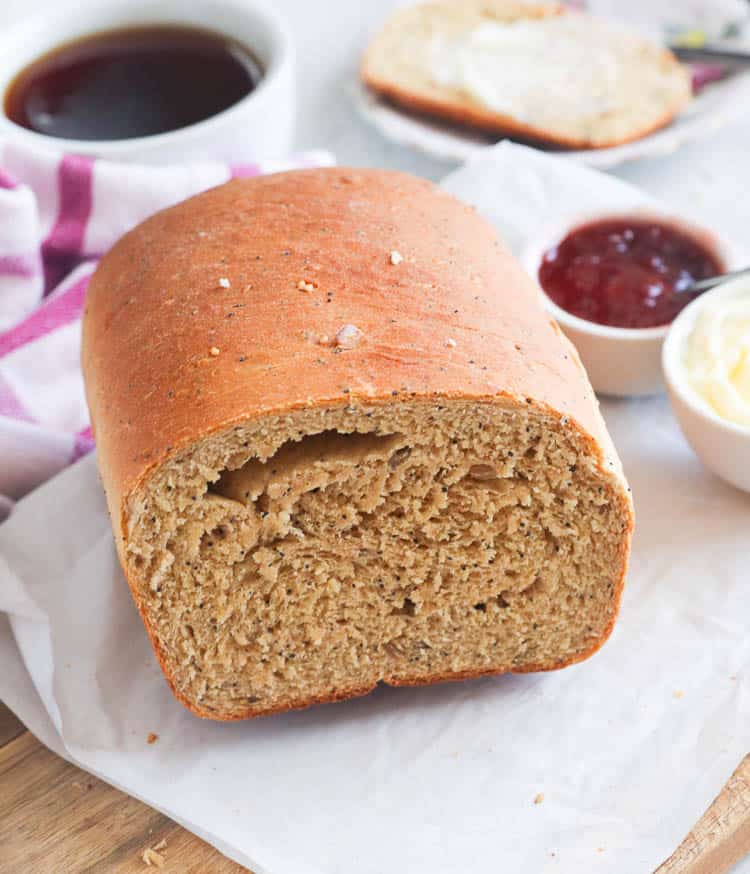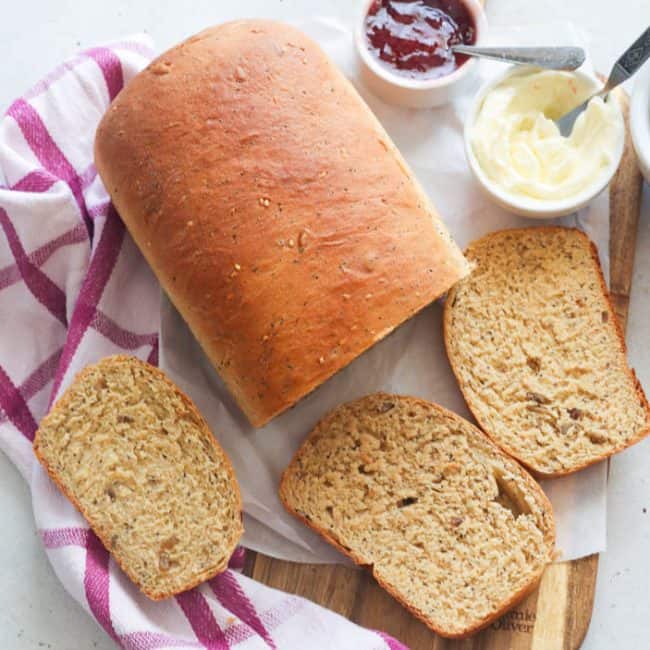Trust me, you’re gonna want to put this baked good in your weekly dietary plan after knowing all the benefits. I tried to follow a diet looong ago wherein my food consisted of whole wheat-based carbs. A week into the program, I felt livelier and cleansed, then I matched it with proper exercise. The results were amazing! It’s not like I’m that kind of person tho who religiously follows a diet. But I also like to switch things up and make some healthy recipes especially during this time of the year. And I just made an incredible and healthier take on my usual homemade bread. Presenting my homemade Whole Wheat Bread.
What is Whole Wheat Flour?
Whether it’s for pasta or pastries, whole wheat flour makes a healthier and more sensational version of a regular dough. Wheat itself is one of the oldest crops dating back to the stone age. People began to domesticate the crop with its different ways to prepare the ingredient. Nowadays, you can find processed flours in the supermarket although you might have a hard time looking for whole wheat. The wheat kernel can be broken down into three parts: the endosperm, the germ, and the bran. Most of the nutrients of the crop are washed away with the current food treatment for regular flour. Although all flour is treated to be readily edible, whole wheat flour retains most of the nutritional attributes.
Wheat Bread vs White Bread
You might be thinking “Bread is bread, there’s no difference between the two”. Well, dear, I’ve got news for you. There are a number of differences between your classic White Bread (see my Homemade HERE) and this Whole Wheat Bread. I’ve listed down so you’d know the importance of knowing which is which.
Texture
Whole wheat flour gives a coarser texture both as flour or when prepared as bread or pasta. The reason for this is the process. White bread flour or regular flour is often milled SUPER FINE and super-fast which destroys or discards the bran.
Gluten
Whole Wheat Bread has the presence of coarse parts such as the husks and shell. These cuts the gluten formation. This doesn’t mean that it’s gluten-free, we’ll still be using flour so naturally, proteins will form. If you compare the gluten content of these two, I’d steer clear of the white bread.
Density
Whole wheat yields a more compact density as it retains more moisture than dry white bread. The fibers in this bread also help with keeping it denser.
Process
The process of milling and preparing the all-purpose or regular flour is different from the whole wheat flour. High-speed machines are used for regular flour while a stone mill is often utilized with whole wheat. Whole wheat bread also contains the bran, endosperm, and germ while it’s washed away in white bread. Whitening agents are also included in regular white bread.
Shelf-Life
You can easily find white flour at the grocery store because it has a longer shelf life than whole wheat. This is because the rapid milling process washes away the nutritious bits. What you’re left with is the starchy endosperm of the kernel.
Recipe Ingredients
With just 10 baking staple ingredients you’ll be able to pull off this healthier version of bread. Here’s what you need for this recipe. Yeast – we want the right amount of air in our Whole Wheat Bread Milk – this ingredient both gives additional flavor and natural sweetness and softness to our bread Salt – to taste and for flavor adjustments Honey – for that touch of natural sweetness and it acts as a binder Unsalted butter – we want that moist feeling on your first bite Whole Wheat Flour – our main ingredient, of course All-purpose flour – The reason why we add a part of all-purpose flour is because we want an easy dough consistency and a softer bread Seeds (Sunflower, Sesame, Poppy) – optional ingredients that would totally give your whole wheat bread an earthy and nutty taste Oatmeal – another optional ingredient you can add to give it an extra texture and nutrients
Is Whole Wheat Bread Healthy?
Generally, foods with whole-grain have more vitamins, minerals, and fiber that help maintain your body and aid digestion. However, there are conditions that might make this lovely treat unhealthy. People with celiac disease cannot tolerate gluten. While this recipe may be low in gluten, it isn’t one hundred percent gluten-free. But in a regular setting, whole wheat bread is indeed healthier than regular white bread. It is also a healthier option for diabetic people with its low sugar levels. Whole Wheat Bread is also a great snack for weight watchers. Although it has about the same amount of calories, this recipe gives you a nutrient-dense bread. This means you get more nutrients per bite that would make you feel fuller faster.
How Long Does it Last?
Homemade whole wheat bread lasts for about 4–5 days when stored in a cool dry place. Store-bought whole wheat bread lasts for about 5–7 days which is about how long other bread types last. Store-bought products might contain high amounts of unnatural preservatives, so better steer away from those as well and make one at home instead.
Storage and Making Ahead Instructions
I usually keep my bread in airtight containers in room temperature places but you can also use cling wrap. You can use any container as long as the bread would not be exposed. This can cause your bread to become stale although still edible. You can make the dough ahead of time for three days at most. The trick here is to let it rise twice. My favorite part about making the dough is punching it when it rises. Wooh! A bit of adrenaline there. You’ll do this twice then refrigerate the dough when you’re ready.
More Homemade Bread Recipes
Want to up your bread-making skill? Try these other homemade bread recipes on the blog.
Potato Bread Homemade Brioche Bread Homemade White Bread Garlic Knots Bread Coco Bread
How to Make Whole Wheat Bread
Start by combining butter and milk in a microwavable bowl, and then microwave for 1-2 minutes or until the butter has fully melted. Pour in honey, yeast, oatmeal, all-purpose flour, salt, and whole wheat flour into the butter mixture. Mix them until combined then start adding the seeds (poppy, sesame, and sunflower). Or you can add the seeds and mix it with the butter mixture before you add the all-purpose flour, salt, and whole wheat flour as shown in the pictures here.
Continue mixing the dough on low speed until it forms a soft dough. If mixing by hand, remove the dough and place it on a lightly floured surface. Knead for about 8 minutes. Place the dough in a greased bowl, turning once to coat the dough. Cover loosely with a clean cloth and let rise in a warm place for 1 1/2 to 2 hours or until doubled.
Punch the dough down. Add the dough onto the floured surface. Then flatten the dough into a rectangle, then fold a third of the dough on top of itself. Quickly fold the bottom third down so that it overlaps the other layers. Pinch the dough to seal where the layers meet to close it up.
Lift the dough and place it into a greased 9×5 inch loaf pan. Allow to rise for an additional 30 minutes or until the dough has risen 1 inch above pans. Brush the dough with an egg wash and top it with additional seeds, if desired. Bake at 350 degrees F (175 degrees C) for about 30-40 minutes or until the loaf is slightly golden brown on top and the loaf sounds hollow when tapped. If bread is browning too fast tent with foil paper. Transfer pan to wire rack to cool for 10 minutes, then remove bread from pan and place on a wire rack to finish cooling. Do not cut the bread before it has completely cooled. Tightly wrap and store at room temperature or freeze for later use. [adthrive-in-post-video-player video-id=”qomvnTrD” upload-date=”2021-01-15T08:00:00.000Z” name=”Whole Wheat Bread” description=”This humble WHOLE WHEAT BREAD is packed with health benefits with a softer texture. And it has just the right density as well for any sweet or cheesy add-on. A wholesome bread you can serve for the whole family any time of the day!” player-type=”collapse” override-embed=”false”]
